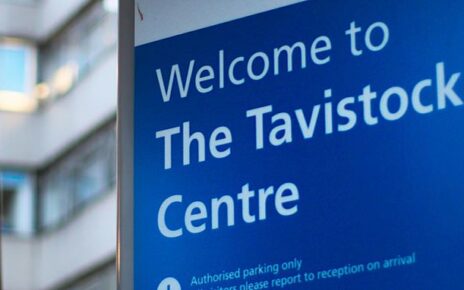Drivers would hit and kill 37,000 fewer deer each year if the United States stuck to daylight saving time year-round, according to estimates in a new study published Wednesday in the journal Current Biology.
The study predicts that keeping year-round daylight saving time — and reducing the amount of time that rush-hour traffic takes place during darkness — would prevent 33 deaths and some 2,000 injuries among people, and save about $1.2 billion in collision costs.
“The numbers are surprisingly large,” said Laura Prugh, an associate professor of wildlife science at the University of Washington and an author of the study. “It’s just noticeable that a seemingly simple change — not changing the clock back in the fall, not falling back — would lead to such a marked reduction in collisions throughout the country.”
The research highlights how subtle changes in human behavior can have major impact on animals. It also adds more ammunition to the charged debate over seasonal time changes and could bolster political arguments for moving the U.S. to permanent daylight saving time.
Daylight saving time is when many parts of the world set clocks ahead by one hour to shift sunlight later in the day.
The U.S. Senate in March approved a bipartisan bill that would make daylight saving time standard for all states except Arizona and Hawaii. The House did not advance the Sunshine Protection Act.
Clocks nationwide will fall back Sunday.
About 2.1 million vehicle crashes in the U.S. each year involve deer, the study says. These crashes account for 440 human deaths each year.
To understand the effect of seasonal time changes, researchers gathered wildlife and vehicle collision data from 23 states and then created a model to estimate impacts nationwide.
Deer are most active on both sides of dawn and dusk, and the data showed that drivers are far more likely to hit deer when it’s dark.
“If you drive two hours after dark, you’re 14 times more likely to hit a deer than if you drive before dark,” said Calum Cunningham, a postdoctoral researcher at the University of Washington and an author of the study.
The data also showed that car crashes involving deer spiked in the fall.
For deer, there could be no worse time of year for humans to suddenly shift their schedules.
“The time switch occurs pretty much exactly smack bang in the middle of the mating period, in particular, for white-tailed deer,” Cunningham said.
During the rut, as mating season is called, male deer “go a little bit crazy, they increase movement and are fixated on reproducing,” he said.
Deer move about 50% more during the rut and are more vulnerable to being struck by vehicles, the study says.
That means when people’s schedules switch to standard time, the clock aligns the heaviest traffic with darkness and during the peak of mating season. The researchers found that collisions with deer increased about 16% in the week after the switch.
“It’s like the perfect storm. These deer are going crazy. They’re really most at risk already and we have this additional change of adding more driving after dark in this switch,” Cunningham said.
After the time switch, fewer deer are killed in the mornings because there’s more light. But not enough drivers set out before dawn to offset the increase in collisions during evening rush hour.
States in the northern U.S. would reduce collisions most from permanent daylight saving. Locations on the eastern edge of their time zone — where it gets dark earlier — would also benefit more.
Some states don’t keep high quality data on wildlife crashes, so the study’s overall numbers are just estimates. But the trend the researchers found runs parallel to what a separate analysis found in New York state.
Tom Langen, a professor of biology at Clarkson University who studied the effect in the state, praised the new study, saying it answered questions about what impact would be nationwide and did a good job accounting for data gaps.
“The bottom-line message is that it’s a big number,” he said. “It’s likely correct that the time shift, and particularly the shift from daylight saving time to standard time in the fall, results in some human deaths and a lot of accidents that would not happen.”
Doctors and researchers, particularly those with the American Academy of Sleep Medicine, have opposed a permanent switch to daylight saving time. They argue that standard time is more beneficial to health because our bodies function better with more sunlight in the morning.
But a change to permanent standard time would worsen deer-vehicle collisions significantly, the model predicts, causing nearly 74,000 more crashes, 66 human deaths and more than 4,100 human injuries.
“On the whole, we need a comprehensive cost-benefit analysis of the way daylight saving time impacts our health and environment,” Cunningham said.
CORRECTION (Nov. 2, 1:21 p.m. ET): A previous version of this article misstated how daylight saving time works. Clocks are set ahead by one hour in the spring, and back an hour in the fall.
Source: Read Full Article


